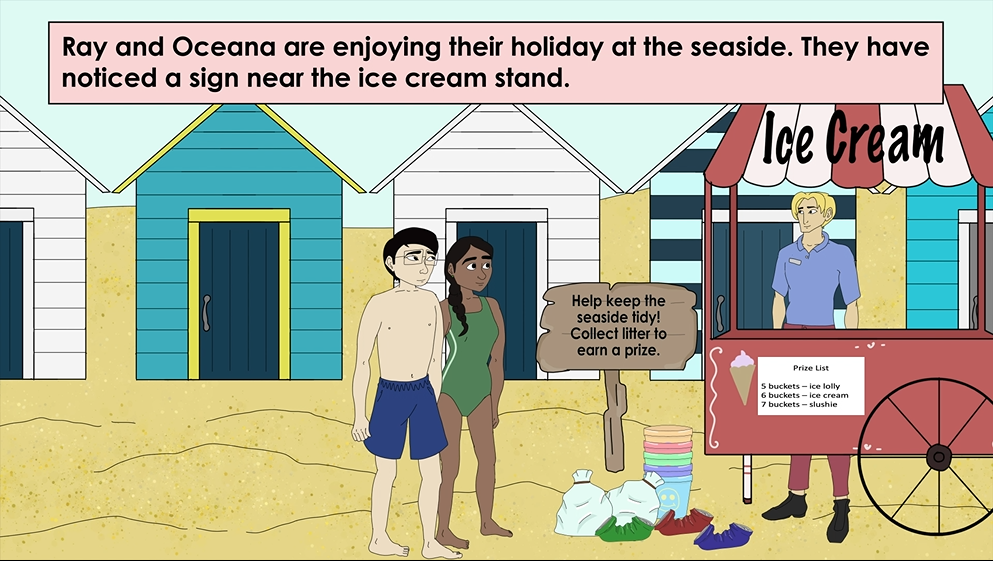Multiply by 8 Year 3 Multiplication and Division Learning Video Clip

Step 8: Multiply by 8 Year 3 Multiplication and Division Learning Video Clip
Ray and Oceana are helping to clean up the shore by collecting up litter on the beach. They need to use their knowledge of multiplying by 8 to work out how many pieces of litter they have collected.
More resources for Autumn Block 3 Step 8.
Not a member? Sign up here.
Discussion points for teachers
1. How many pieces of litter do they need to collect to earn one ice lolly?
Discuss which is the relevant information to create a multiplication calculation.
5 x 8 = 40 pieces of litter
2. How many pieces of litter could have been collected?
Discuss the possible number of children on the beach and how much litter they could have in total. This question is open-ended for the children to explore.
There could be 56 (7 x 8), 64 (8 x 8) or 72 (9 x 8) pieces of litter collected.
3. How many pieces of litter are floating in the sea?
Discuss how to create a multiplication calculation to find the answer.
9 x 8 = 72 pieces of litter
4. Is Oceana correct?
Discuss how to compare the what each child has.
Oceana is correct because 6 x 8 = 48 pieces of litter. 48 is greater than 40, so she has collected more.
5. Which prize can they each claim?
Discuss strategies for how to calculate each answer.
Ray can have the ice cream because 6 x 8 = 48 and Oceana can have the slushie because 7 x 8 = 56.
National Curriculum Objectives
Mathematics Year 3: (3C6) Recall and use multiplication and division facts for the 3, 4 and 8 multiplication tables
Mathematics Year 3: (3C8) Solve problems, including missing number problems, involving multiplication and division, including positive integer scaling problems and correspondence problems in which n objects are connected to m objects
This resource is available to play with a Premium subscription.





